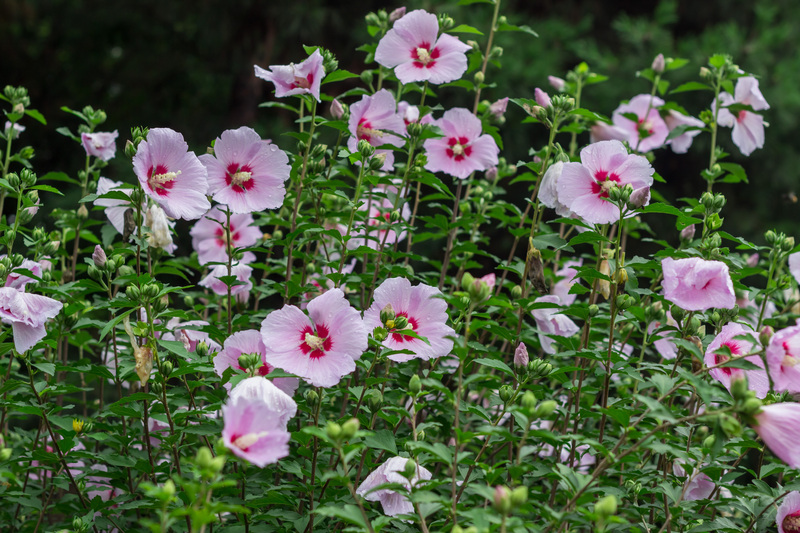Safeguarding Your Green Haven from Intense Winds
Posted on 13/08/2025
Safeguarding Your Green Haven from Intense Winds: The Ultimate Guide
Is your lush, vibrant garden at risk during windy seasons? Protecting your green haven from intense winds is essential to ensuring your plants, landscape, and outdoor space remain healthy and thriving all year round. In this comprehensive article, we'll unveil proven strategies, expert tips, and innovative solutions to fortify your garden sanctuary against the worst that Mother Nature can unleash.
Understanding the Impact of High Winds on Gardens
Before we dive into prevention and protection methods, it's vital to recognize how winds--especially strong or gale-force winds--impact your outdoor paradise.
- Physical Damage: High winds snap stems, break branches, and can uproot shallow-rooted plants.
- Soil Erosion: Persistent gusts strip away nutrient-rich topsoil, jeopardizing plant health.
- Moisture Loss: Winds accelerate evaporation, leaving flowers and vegetables dehydrated.
- Spread of Disease: Wind-driven debris may introduce pests or diseases to your green haven.
Even well-established gardens are vulnerable. That's why proactive wind protection is a crucial element of garden care.

How to Identify Your Garden's Wind Threats
To safeguard your green oasis from strong winds, the first step is accurate assessment:
- Locate Prevailing Winds:
Observe the direction and strength of airflow (especially after storms). - Analyze Surroundings:
Take note of obstacles--or lack thereof--such as fences, buildings, or natural windbreaks. - Spot At-Risk Plants:
Identify plants and trees that show wind damage, such as battered foliage or leaning stems.
This evaluation creates a blueprint for targeted wind-protection strategies tailored to your unique landscape.
Proactive Measures for Wind-Resistant Gardens
1. Building Natural and Artificial Windbreaks
Perhaps the most effective way to protect your green sanctuary against intense winds is by establishing windbreaks. These can be both natural and man-made.
Natural Windbreaks
- Hedges and Shrubs: Plant dense, evergreen hedges such as boxwood, privet, or holly. Their year-round foliage blocks and diffuses winds.
- Trees: Use rows of sturdy, wind-tolerant trees (like pine, cedar, or juniper) for perimeter protection.
- Layering: Combine tall trees with lower shrubs to create a graduated barrier that slows gusts at multiple heights.
Tip: Stagger plantings rather than forming a solid wall for better wind reduction and air flow.
Artificial Windbreaks
- Fences: Erect slatted wooden or bamboo fences that let some air through--solid walls can create destructive turbulence.
- Garden Screens: Use mesh screens, trellises, or even temporary canvas barriers as adaptable, aesthetic wind protection.
- Reinforced Structures: For high-risk zones, install windbreak netting specifically designed for horticultural use.
Remember, spacing and density are crucial--aim for windbreaks that filter about 50-80% of the wind, not block it completely.
2. Anchoring and Supporting Vulnerable Plants
Vulnerable plants, especially young trees and tall perennials, require extra support to survive severe winds.
- Staking: Secure saplings and new trees with soft ties and stakes for the first few years.
- Caging and Guying: Use cages or guy wires on top-heavy shrubs or climbing plants.
- Spacer Materials: Insert foam, rubber, or cloth between ties and plant stems to prevent chafing and injury.
Periodically inspect these supports, ensuring they remain snug but not constricting as your plants grow.
3. Smart Plant Selection
Choosing wind-tolerant varieties is a forward-thinking strategy for safeguarding your green environment from stormy conditions.
- Grasses: Ornamental grasses like Muhlenbergia, Panicum, and Miscanthus sway without breaking.
- Ground Covers: Spreading ground covers such as creeping thyme or vinca anchor and shield soil.
- Tough Perennials: Plants like lavender, sea thrift, and sedum are renowned for standing up to wind.
Consult with your local garden center about native plants naturally adapted to windy climates--they often require less maintenance and watering, too!
Soil Management: The Foundation of Wind Protection
Healthy, robust soil is the bedrock of a wind-resistant garden. Extreme winds degrade loose or exposed soil, leading to erosion and poor plant health. Here's how to build a firm foundation:
Mulching Matters
- Organic Mulch: Spread bark, straw, leaf mold, or compost 2-4 inches thick to insulate roots and hold soil moisture.
- Inorganic Mulch: Gravel or stone avoids blowing away in storms and adds weight to anchor the ground.
- Living Mulch: Use ground covers as living mulch--they knit the soil together and deter erosion.
Soil Contouring for Wind Protection
- Terracing Slopes: Lower wind exposure by breaking long slopes into level terraces or berms.
- Raised Beds: Elevated planters add height and protection, particularly for delicate growth.
*Healthy soil equals healthy plants,* and nothing heals wind damage better than strong, resilient roots!
Additional Tips for Shielding Your Garden from Intense Gusts
Strategic Placement of Garden Elements
- Moveable Pots: Relocate potted plants to sheltered corners or group them for mutual protection during wind alerts.
- Garden Structures: Use arbors, greenhouses, and sheds as wind shields for sensitive plantings.
- Compost Bins: Place composters upwind--they double as wind buffers and enrich soil over time.
Regular Maintenance and Emergency Readiness
- Pruning: Trim dead or diseased branches to minimize breakage and wind resistance.
- Inspections: After every storm, check for loose fencing, uprooted plants, and debris that could harbor pests.
- Contingency Plans: Have horticultural fleece or row covers on standby for emergency overnight protection.
Long-Term Planning: Creating a Resilient Landscape
A truly wind-resilient green oasis isn't achieved overnight. Use these long-term strategies for sustained protection:
- Layered Planting Schemes: Blend tall, mid-level, and groundcover species for a multi-tiered defense system.
- Integrated Windbreak Networks: Position windbreaks to create sheltered microclimates for even the most delicate plants.
- Permanent Soil Binding: Foster deep-rooting native species that naturally stabilize your soil structure.
- Eco-Friendly Choices: Avoid plastic or non-biodegradable materials; opt for sustainable, nature-friendly solutions wherever possible.
Safeguarding Edible Gardens and Allotments from Extreme Winds
Edible gardens can be especially vulnerable to intense winds. Tender seedlings, sprawling vines, and tall crops like tomatoes or corn need special attention:
- Cloche and Tunnels: Use cloches or garden tunnels for young vegetables to shield them during their weakest stages.
- Row Covers: Lightweight fabrics provide protection from both wind and sudden temperature drops.
- Trellis Systems: Train beans, peas, and tomatoes onto staked trellises anchored securely into the ground.
- Crop Rotation: Shift wind-sensitive crops to protected areas or behind larger wind-tolerant species each year.
Harvest time depends on strong, healthy plants. With the right wind-reduction practices, your kitchen garden will flourish through every season.

Frequently Asked Questions on Protecting Gardens from Strong Winds
What plants are best for natural windbreaks?
Select dense, perennial evergreens such as laurel, yew, holly, photinia, or hornbeam. For taller barriers, opt for wind-firm conifers like pine, spruce, or Italian cypress. For coastal or exposed sites, griselinia, escallonia, and elaeagnus are highly wind-tolerant.
Is a solid fence or a slatted fence better for wind protection?
Slatted or 'see-through' fences are generally best, because they slow and disperse winds rather than forcing strong currents over or around your garden, which can create damaging eddies.
How often should I check garden structures after storms?
After any significant wind event, inspect all windbreaks, supports, and vulnerable plants immediately. Frequent checks--especially during the gusty season--will catch potential problems before they escalate.
Conclusion: Invest in Wind Protection for a Flourishing Green Retreat
Your green haven deserves year-round beauty and vitality. By understanding local wind patterns, reinforcing with layered shelter, anchoring vulnerable spots, and giving soil and plants the care they crave, you'll ensure your garden weathers the roughest storms. Whether you're shielding a kitchen plot, a pollinator paradise, or a peaceful outdoor lounge, the right wind protection methods will help your sanctuary thrive for decades.
Start implementing these strategies today. By making safeguarding your green haven from intense winds a priority, you're not just protecting plants--you're cultivating a serene, sustainable landscape that rewards you season after season.
```


